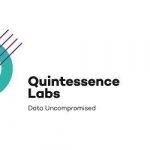Finland a leader in refrigeration technology & fundamental research for quantum computers

(ComputerWeekly) Fundamental physics research in Finland has led to at least six very successful spin-offs that have supplied quantum technology to the global market for several decades.
According to Pertti Hakonen, an academic at Aalto University, it all started with Olli Viktor Lounasmaa, who in 1965 established the low-temperature laboratory at Aalto University, formerly Helsinki University of Technology. “He served as lab director for about 30 years,” says Pertti Hakonen, professor at Aalto University.
The low-temperature lab was a long-term investment in basic research in low-temperature physics that has paid off nicely. Hakonen, who has been conducting research in the lab since 1979, witnessed the birth and growth of several spin-offs, including Bluefors, a startup that is now by far the market leader in cryostats for quantum computers.
Bluefors has more than 700 units on the market that are used for both research in publicly funded organisations, and for commercial research and development. One big market that has driven the dilution refrigeration is quantum computing. Anyone currently doing quantum computing based on superconducting qubits is most likely to have a Bluefors cryogenic system.
“Our most powerful model today can probably run a few hundred qubits in one enclosure,” says Gunnarsson. “IBM has just announced it has a system with 127 qubits. We can handle that many in one enclosure using the most powerful system we have today.”
Another challenge for quantum computing is to get electronics inside the refrigerators. All operations are performed at very low temperatures, but then the result has to be taken up to room temperature to be read out. Wires are needed to start a program and to read results. The problem is that electrical wires generate heat.
every qubit needs at least one control line and then one readout line. Multiplexing can be used to reduce the number of readout lines, but there is still a lot of wiring per qubit. The chips themselves are not that large – what takes up most space are all the wires and accompanying components. This makes it challenging to scale up refrigeration systems.
“Since Bluefors supplies the cryogenic measurement infrastructure, we developed something we call a high-density solution, where we made it possible to have a six-fold increase in the amount of signal lines you can have in our system,” says Gunnarsson. “Now you can have up to 1,000 signal lines in a Bluefors state-of-the-art system using our current form factor.”
Finland has a very strong tradition in quantum theory in general – and specifically, the quantum physics used in superconducting qubits, which is the platform used by IBM and Google. Now a large area of active research is in quantum algorithms. Finland has a very strong tradition in quantum theory in general – and specifically, the quantum physics used in superconducting qubits, which is the platform used by IBM and Google. Now a large area of active research is in quantum algorithms.
“How one goes about making a program is a key question,” says Sabrina Maniscalco, professor of quantum information and logic at the University of Helsinki. “Nowadays, the situation is such that programming quantum computing is much more quantum theory-related than any software ever managed or developed.
Maniscalco is a case in point. In addition to her research into quantum algorithms at the University of Helsinki, she is also CEO of quantum software startup Algorithmiq, which is focused on developing quantum software for life sciences.
Overcoming the noisiness of the current generation of qubits is one of many challenges standing in the way of practical quantum computers. Once those barriers are lifted, the work Maniscalco and other researchers in Finland are doing on quantum algorithms will certainly have an impact around the world.



















